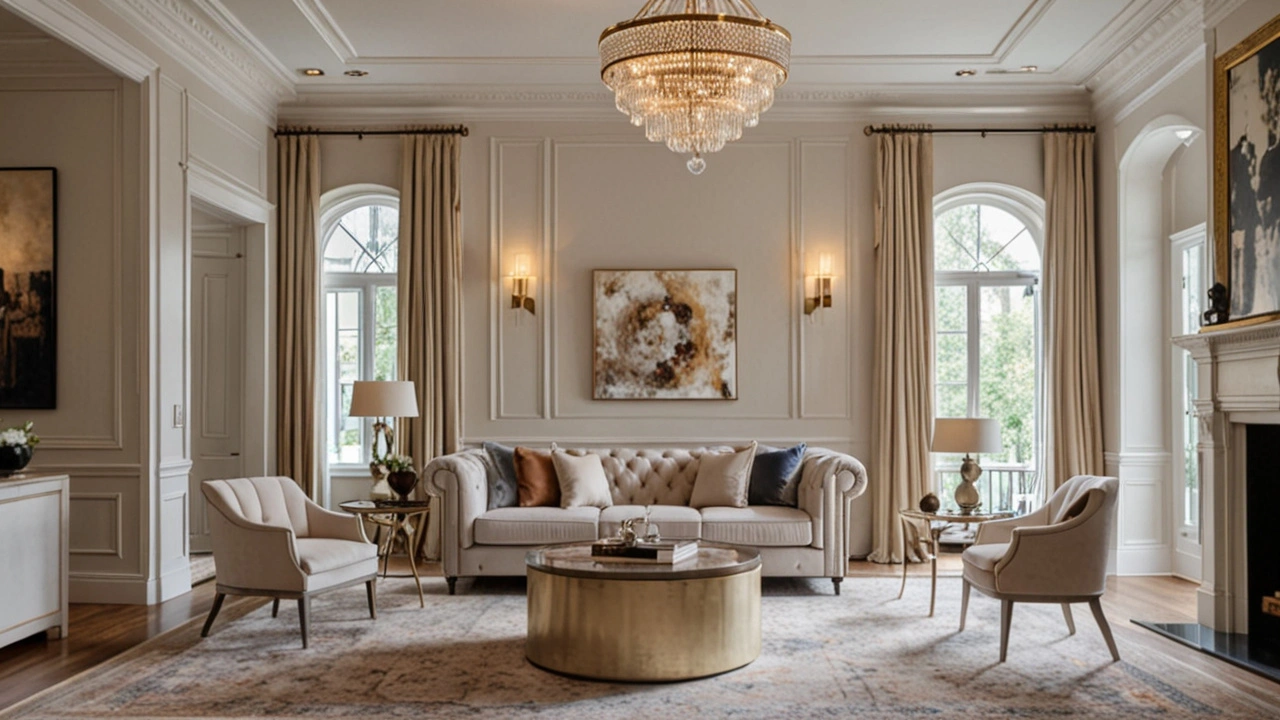Classic Interior Design That Actually Works for Real Homes
A classic interior lasts because it gets the basics right: good proportion, durable materials, and a clear focal point. You don’t need a huge budget or a historic house to create a room that feels settled and smart. Use a few steady rules and small changes that add up to a calm, elegant space.
Core elements to focus on
Start with a neutral base: warm whites, greys, beiges, or soft greys-blues. Neutrals make furniture and art stand out and let you swap accents over time without a full redo. Add one or two rich accent colors—deep navy, olive, burgundy—through cushions, rugs, or a painted door.
Think scale and symmetry. Arrange furniture around a clear focal point like a fireplace, large window, or a single statement piece of art. Two matching lamps, paired chairs, or a centered rug create balance and a sense of order that feels classic.
Invest in solid pieces. Choose real-wood tables, sturdy upholstered sofas with removable covers, and classic finishes that can be refreshed. These pieces wear well, reupholster easily, and hold value better than flimsy, trendy items.
Practical styling tips you can do this weekend
Layer lighting: mix overhead light, table lamps, and a directional floor lamp for reading. Lighting changes the mood and makes rooms look richer.
Use trim and simple moldings to lift a room. Crown molding, picture rails, or painted skirting add character—often at a low cost if you install them yourself or hire a local carpenter.
Mix old and new. Pair a modern lamp with a vintage side table or hang contemporary art above a traditional mantle. The contrast keeps the room from feeling dated while respecting classic lines.
Work with textiles: a patterned rug, velvet cushion, or linen curtains give depth. Choose patterns in different scales—small weave on cushions, large pattern on rugs—to avoid visual fight.
Room-specific moves: in the living room, orient seating toward conversation and a focal point; in the bedroom, keep bedding layered and simple with quality sheets; in the dining room, prioritize a sturdy table and good overhead lighting for long dinners.
Budget-friendly hacks: refinish a thrifted table, repaint old wardrobes, or swap hardware on cabinets for a polished look. Look for estate sales and local workshops for one-of-a-kind pieces that add personality without huge cost.
If you want inspiration, check articles on Paul Artistry about Bauhaus simplicity, Baroque revival touches, or avant-garde home décor to see how classic rules mix with other styles. Small, deliberate choices create rooms that age well and feel lived-in, not staged.

